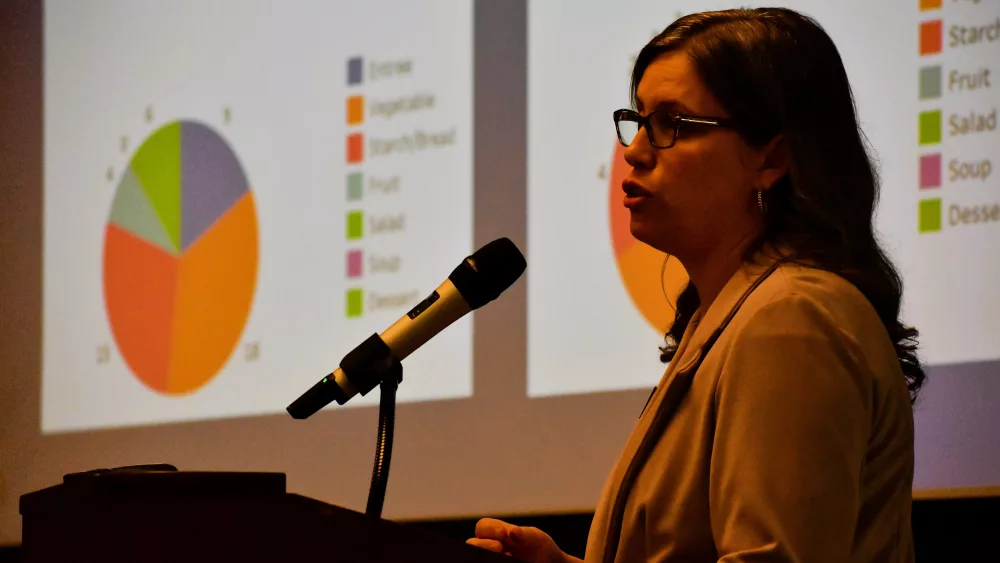Kelly Jackson
Christian County Extension Office
Prevent Grape Anthracnose Now
Backyard grapes will soon begin to break dormancy, so grape growers will want to take steps now to prevent anthracnose disease. Grape anthracnose most commonly occurs on shoots and berries; however fruit stems, leaves, petioles and tendrils are also susceptible. Anthracnose reduces the quality and quantity of fruit and weakens the vine. Once the disease is established in a vineyard, it can be very destructive. Anthracnose of grape is caused by the fungus Elsinoe ampelina.
On young, succulent shoots, lesions first appear as numerous small, circular, reddish spots that enlarge, become sunken, and develop gray centers and round or angular edges. Slightly raised, dark reddish-brown to violet-black margins eventually surround the lesions. Lesions may coalesce, causing a blighting or killing of the shoot. Infected areas may crack, causing shoots to become brittle. Anthracnose lesions on shoots may be confused with hail injury; however, unlike hail damage, the anthracnose lesion edges are raised and black and generally distributed while hail damage generally appears on only one side of the shoot.
On leaf petioles and on the fruit stems, symptoms appear similar to that seen on the shoots. Leaf spots are circular with gray centers and dark margins and are often numerous. The necrotic center of the lesion often drops out, creating a shot-hole appearance. Young leaves are more susceptible to infection than older leaves. When veins are affected, especially on young leaves, the lesions prevent normal development, resulting in malformation or complete drying or burning of the leaf. Lesions may cover the entire leaf blade or appear mainly along the veins.
On berries, small, reddish circular spots initially develop. The spots then enlarge to an average diameter of 1/4 inch and may become slightly sunken. The centers of the spots turn whitish gray and are surrounded by narrow reddish-brown to black margins. This symptom often resembles a bird’s eye, and the disease has been called bird’s eye rot. Lesions may extend into the pulp and cause the fruit to crack. Clusters are susceptible to infection from before flowering until the onset of ripening.
The fungus overwinters in the vineyard as sclerotia (fungal survival structures) on infected shoots. In the spring, during prolonged wet periods, the sclerotia germinate to produce abundant spores (conidia) which are spread by splashing rain to new growing tissues. In early spring, when free moisture from rain or dew is present, conidia germinate and infect succulent tissue. Although conidia can infect over a wide range of temperatures (ranging from 36F to 90F), the higher the temperature, the faster disease develops. For example, disease symptoms take approximately 13 days to appear after infection occurs at 36F and only four days after infection occurs at 90F. Heavy rainfall and warm temperatures are ideal for disease development and spread. Once the disease is established, fruiting bodies form on diseased areas. These produce spores during periods of wet weather and are responsible for continued spread of the fungus and the disease throughout the growing season.
To reduce or control anthracnose:
- Prune out and destroy (remove from the vineyard) diseased shoots, cluster stems, and berries during the dormant season. Sanitation is very important to reduce primary inoculum.
- Eliminate wild grapes near the vineyard so they don’t serve as a reservoir for the disease. This may be difficult in wooded areas, but they should at least be removed from fence rows.
- Plant disease-tolerant cultivars. Vinifera and French Hybrid cultivars may be more susceptible than American grapes, such as Concord and Niagara.
- Open up the canopy by selecting training system, shoot positioning, and leaf removal practices that promote foliage drying and sunlight penetration.
Apply a dormant application of Liquid Lime Sulfur in early spring, followed by applications of foliar fungicides during the growing season.





